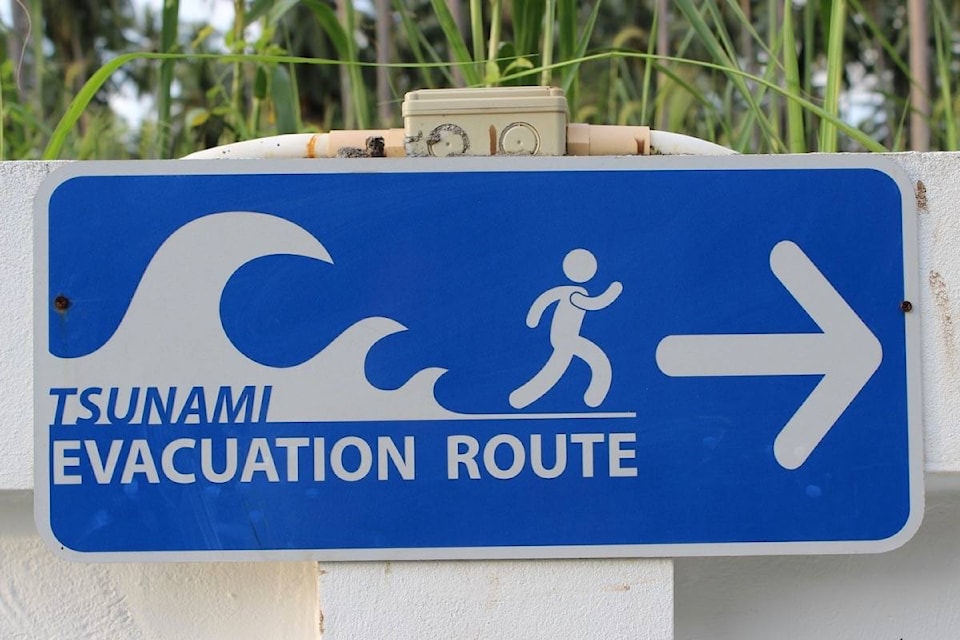Late Tuesday evening, March 24, a 7.5-magnitude earthquake struck Russia’s Kuril Islands prompting the U.S. Tsunami Warning System to issue a tsunami watch alert for Russia and Hawaii.
The Port Alberni Fire Department was swift to contact Emergency Management B.C. to determine if the Coast was at risk of tsunami waves. At 9:10 p.m., Emergency B.C. issued a statement confirming the earthquake was no threat to the B.C. Coast.
Russia’s tsunami scare made a lot of West Coasters wonder about what to do if a tsunami alert was indeed issued for the Coast.
Ucluelet’s fire chief and emergency services manager Rick Geddes and Tofino’s emergency services co-ordinator Keith Orchiston said the basic principles apply: go to high ground.
“For us in Ucluelet, we would still assemble our EOC Team at the fire hall, go over our evacuation plan, and execute the plan. Our main message for people is to go to our high ground “safe” zones. i.e.: the school fields, Tugwell Field, Amphitrite Point etc.,” said Geddes.
Orchiston reiterates.
“All the basic principles still apply here, in terms of community response. If you feel an earthquake, “Drop, Cover, and Hold On”. Then immediately move to the identified high ground areas. Once there we would ask that you maintain social distancing protocols. This will look different depending on where you are (top of Industrial Way, Reception Centre, etc.),” said Orchiston, adding the District of Tofino has specific messaging flagged and ready to send out in the event of an “emergency on emergency”.
The big twist, notes fire chief Geddes, is that we now have thrown into the picture is social distancing due to COVID-19 safety concerns.
“To address that, we would stress to people who are not in the inundation zone, that they should shelter in place. Those within the inundation zone would be advised to continue social distancing practices as best they can. This may mean evacuating, but then sheltering in place in your vehicles,” Geddes said.
What do you do if you’re quarantined after returning from an international trip or you are exhibiting symptoms of COVID-19? It’s like triaging emergencies—deal with the biggest threat first, Port Alberni EOC information manager Karen Freethy said.
“You have to deal with the imminent threat first. That would be the tsunami. It would mean evacuating from your house (if you’re in the inundation zone) because that is the immediate threat, over a potential threat from COVID-19.”
In Port Alberni, the EOC is prepared to open multiple reception centres—the main site is Echo ‘67 Centre on Wallace Street—to aid in social distancing with the number of people expected. Sheltering in a vehicle in the parking lot is acceptable.
“We also know there are a lot of people that would be on foot. We would open reception centres anyway to provide shelter for people coming on foot.”
nora.omalley@westerlynews.ca
Like us on Facebook and follow us on Twitter
READ: Tsunami not expected for B.C. after 7.5-magnitude earthquake hits near Russia
READ: 4.8 earthquake shakes Vancouver Island’s west coast (Jan. 24, 2020)
